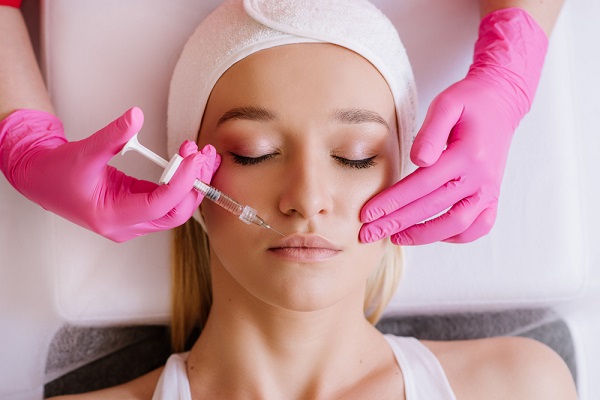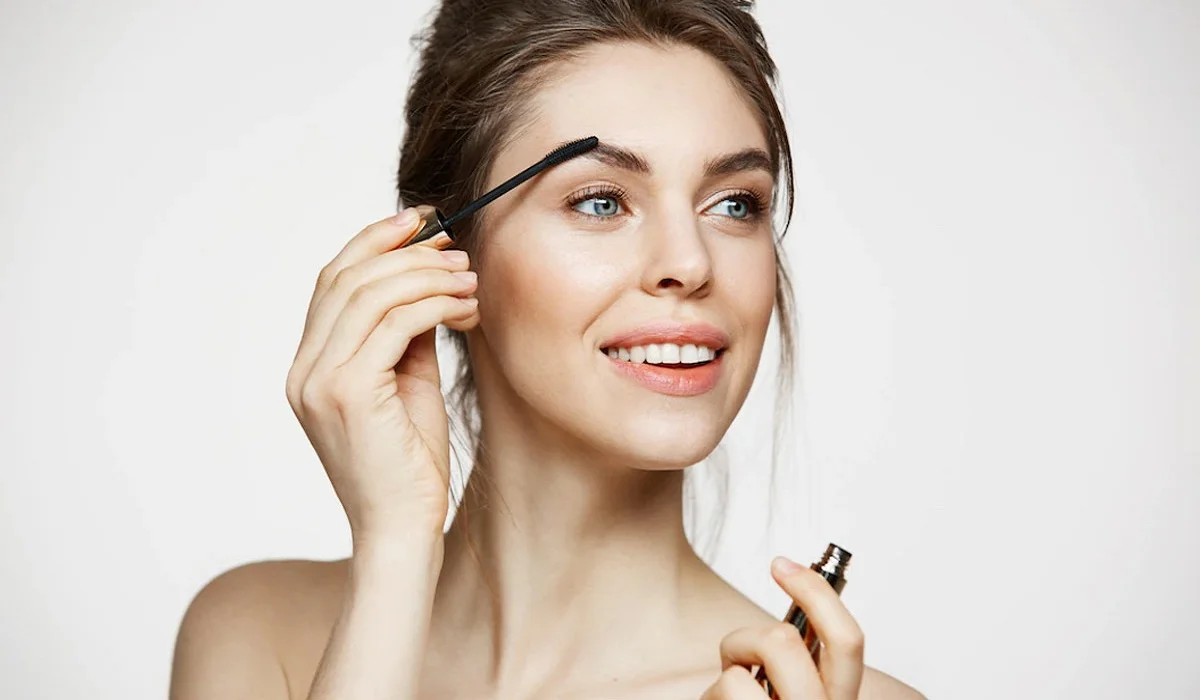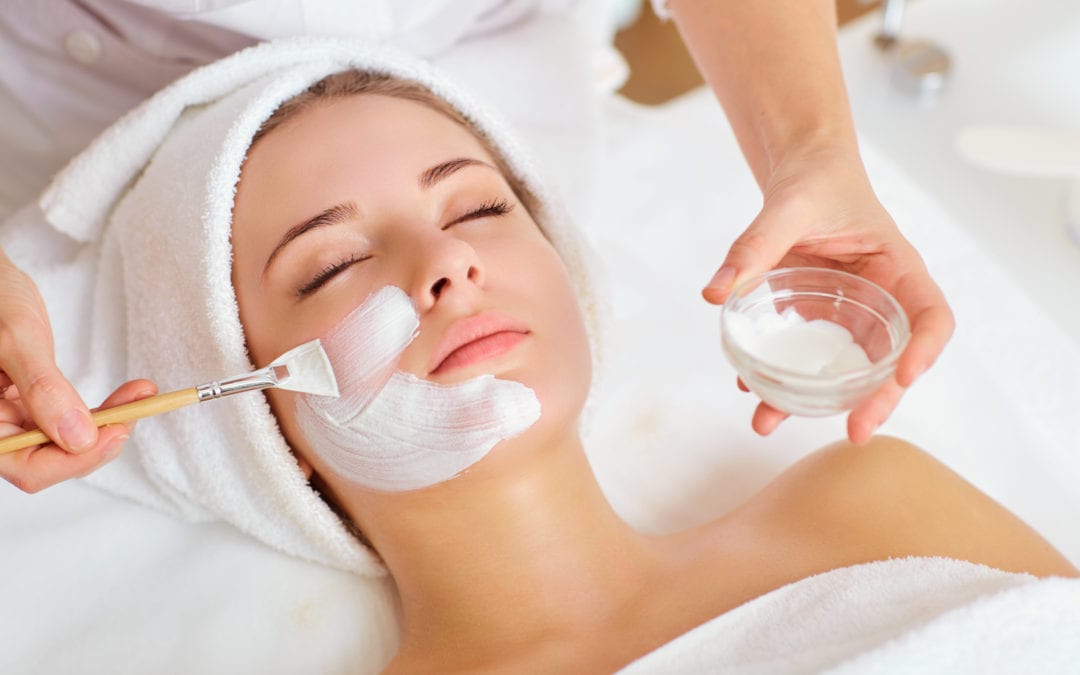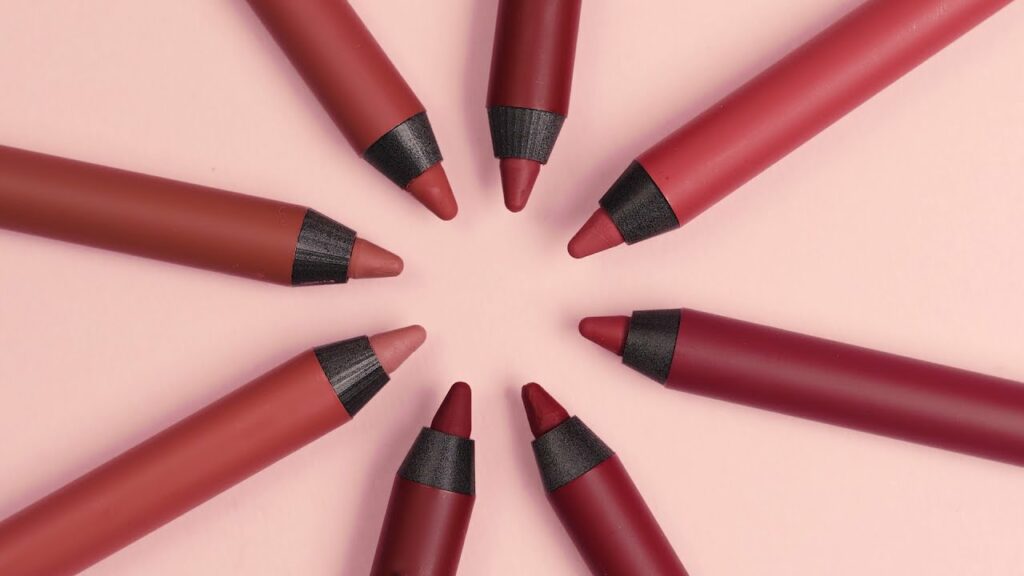
Lip pencils are often overlooked when it comes to makeup application. Although lipstick and gloss may garner all of the glory, lip pencils play an integral part in creating well-defined, long-wearing lip looks. From outlining lips to preventing feathering of lipstick pigment, these versatile tools perform multiple duties that contribute to flawless and stunning lip makeup looks. In this comprehensive guide we’ll dive deep into lip pencil world and discover their purpose while learning how to best utilise them to achieve flawless and stunning lip makeup looks.
Chapter 1 : Anatomy of a Lip Pencil
Before beginning with lip pencils, it’s essential to understand their basic structure and composition. Lip pencils (sometimes known as lip liners ) are makeup tools used for enhancing and defining lips; their usual components typically consist of:
Wooden or Mechanical Barrel: Traditional lip pencils typically feature wooden barrels similar to standard pencils; however, more modern options have evolved into mechanical or retractable lip pencils with twist-up or click mechanisms, providing convenient on-the-go application without sharpening needs.
Pigmented Core: At the core of every lip pencil lies its pigmented, waxy and slightly firm makeup material – responsible for providing color delivery while creating precise lines when applied directly onto lips. Lip pencils come in an assortment of shades designed to complement different lip hues.
Emollients and Binders: For an effortless application, lip pencils contain emollients and binders which help ensure an effortless glide across lips while adhering closely to skin to avoid feathering or smudging. These ingredients create creamy textures which effortlessly glide on lips with adhesion properties to skin that prevent smudging or feathering of makeup application.
Preservatives: As with many cosmetic products, lip pencils can contain preservatives in order to increase shelf life and ensure product integrity.
Additional Features: Lip pencils may come equipped with additional features like brushes or smudgers on one end that allow users to feather out lip liner and achieve more natural-looking applications. These extra tools may come in handy for creating seamless transitions when it comes to applying it and feathering its application onto lips.
Understanding how a lip pencil works is the first step to becoming proficient with its use. From traditional wooden lip pencils to convenient mechanical models, understanding its components’ interdependencies will enable you to craft well-defined lip looks with striking effects.
Chapter 2 : Lip Definition Technology and its Advantages
Lip pencils serve one primary function: they help define lip contours precisely and precisely. No matter whether your target look is natural everyday lip look or bold dramatic pout, lip definition remains powerfully transformative. Here’s how lip pencils can help achieve ideal lips:
Enhancing Lip Shape: Lip pencils can be invaluable tools in improving the natural shape of lips. By subtly overlining or slightly adjusting their outline, lip pencils allow users to achieve fuller lips or an evenly balanced profile if their contours differ greatly from each other. They’re especially beneficial if there are uneven contours.
Avoid Feathering and Smudging: Feathering and smudging of lipstick are two common makeup problems, especially with more creamy or vibrant lip colors. Lip pencils act as barriers against bleeding into fine lines around your lips by outlining their edges using lip pencil. By doing this, they ensure your lip color stays put all day.
Attaining Clean Lines: Utilizing a lip pencil makes creating crisp and clean lip lines effortless. From classic well-defined lips outlines to experimental new shapes, lip pencils provide precision necessary for artistic flourishes in lip designs and shapes.
Long-Lasting Lip Color: Lip pencils can extend the wear time of lipstick or gloss products by outlining and filling in lips first with lip pencil before applying lipstick or gloss, creating a base which anchors them securely allowing longer-wear even through meals and drinks.
Versatile Lip Effects: Lip pencils offer versatility when it comes to lip makeup. From classic looks such as the iconic red lip, all the way through trendy options like gradient or ombre lips – using them allows you to express your creativity while staying on-trend! These artistic options allow for self-expression while being on-trend!
To fully unleash the potential of lip definition, it is crucial that you learn proper methods for outlining and shaping lips. From natural everyday looks to bold dramatic styles, lip pencils are your greatest allies when creating beautifully defined lips – in these chapters we will delve further into these techniques so you can master this art form of lip definition!
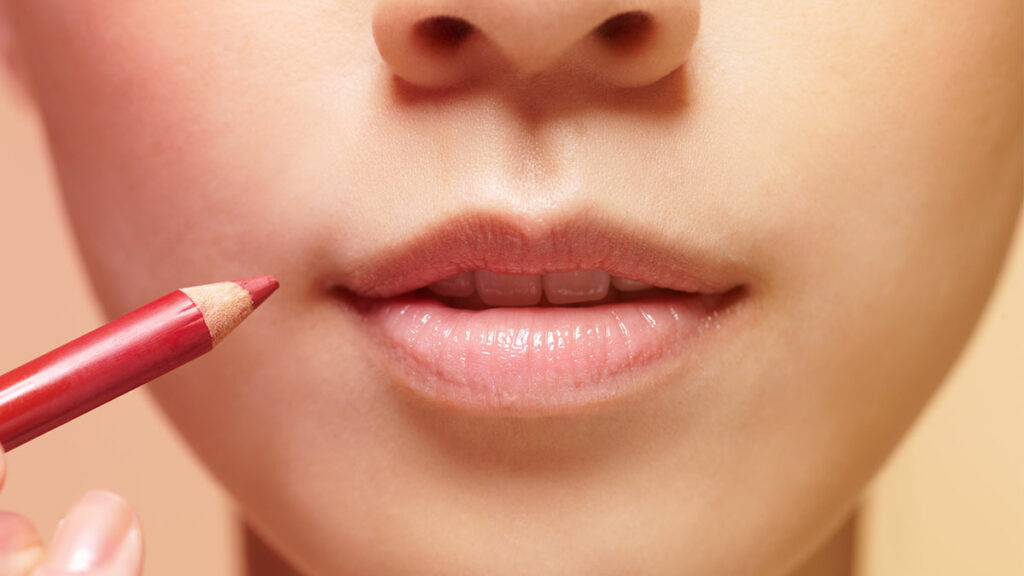
Chapter 3 : Lip Priming Technique
Before diving into lip pencils and lipsticks, it’s essential to understand their role in creating flawless and long-term lip looks. Lip priming sets the scene for your lip makeup routine by helping keep pencil and lipstick in place throughout the day – it truly should not be underestimated as an integral step of lip makeup routines! Here’s why lip priming should become part of your everyday lip makeup regimen:
Hydrating and Smooth Texture: Lip primers are specifically designed to provide a hydrating and smooth foundation for lip makeup applications, helping protect lips from becoming dry or flaky, which could hinder application. By offering moisture replenishment they help preserve an even surface that makes application of lipstick products possible.
Extended Lipstick Wear: Lip primers extend the longevity of lipstick color by acting as a barrier between it and feathering, smudging or fading prematurely. Thanks to an effective primer application, vibrant lips colors can last even in challenging circumstances for hours at a time!
Increased Lipstick Pigmentation: Lip primer can boost the pigmentation of any lipstick product you wear, creating vibrant, true-to-shade colors that pop. This feature can especially come in handy with sheer or light hued lipsticks which may need some additional depth of hue for optimal wearability.
Smooth Lip Surface: Lip primers create an unobstructed surface for lip products to adhere to, making application effortless with clean and precise lip lines as a result of effortless pencil application. This results in beautiful looking lipstick looks.
Improved Lip Texture: For those suffering from fine lines and wrinkles on their lips or uneven texture issues, using lip primer may provide relief by filling in any imperfections and creating more even and youthful-looking lips.
Effective lip primer use starts by applying a thin coat over clean and dry lips and waiting two or three minutes before proceeding with lip pencil and lipstick application. This small step can dramatically enhance both quality and longevity of lip makeup application.
Lip primers come in various formulations such as balms, gels and creams to meet individual preferences and meet various lip concerns, including dryness, color correction or anti-feathering properties. By mastering lip priming techniques you ensure that your makeup looks its best no matter the style you desire!
Chapter 4: Lip Contouring and Ombre Effects
Lip pencils are powerful tools, offering more than simply outlining of lips. They play a pivotal role in contouring lips with stunning ombre effects for exploring various lip makeup styles and trends. Here’s how you can master these artistic techniques:
- Lip Contouring: Lip contouring involves adding dimension and definition to your natural shape of lips without resorting to fillers or other invasive procedures – creating fuller lips while giving more shapely shapes without fillers or surgery being required! Here’s how lip contouring with pencil can work:
Highlight the Cupid’s Bow: Start by outlining your Cupid’s Bow, the curved area in the center of your upper lip. Use a lighter shade lip pencil to highlight this area; this technique draws attention to it while emphasizing natural lip contours.
Create Shadows: For added depth and dimension, try shading your lips using a darker lip pencil shade on both the outer corners. Apply along both the upper lip edges as well as lower lips; blend this using either your lip brush or fingertip so as to achieve a natural-looking result.
Blend and Layer: Lip contouring requires expert blending and layering skills. A brush or your fingertip are an effective way of seamlessly blending lighter and darker tones together for an attractive contoured effect. By creating transition between highlighted and shaded areas on your lips, this creates an alluring angled contoured effect and ensures maximum volume at every spot on each lip contoured by lip contouring techniques.
- Ombre Effects: Ombre lips have become an increasingly fashionable trend in makeup, creating an eye-catching gradient of colors on lips. Lip pencils can help achieve this captivating effect; here’s how:
Choose Your Colors: Select two or more lip pencils whose hues blend harmoniously together for an ombre lip look, such as transitioning from darker edges to lighter tones in the center of your lips.
Outline and Fill: Start by outlining your lips using a darker lip pencil, filling only in outer edges using that same pencil, leaving center unfilled.
Add the Lighter Shade: With either a lighter lip pencil or different shade in mind, apply an even lighter tone in the center of your lips using an application tool and gently blend where dark and lighter tones meet, to achieve an attractive gradient look.
Attain a Perfect Gradient: For an effective gradient effect, blend and layer colors until you achieve an eye-catching play of hues from outer corners to center lips. The goal should be an elegant blend between hues from their respective corners to center of lips.
Lip contouring and ombre effects are versatile techniques that let you express your creativity while adapting your lipstick look to various occasions or styles. From bold contoured lips to subtle ombre effects, lip pencils provide essential tools for producing these artistic effects – in subsequent chapters we will also examine further techniques and tips that help perfect these techniques.
Chapter 5 : Lip Liner Use
Lip liners are essential tools in creating an appealing and long-wearing lip look. Not only can they prevent feathered lipstick from feathering out or smudging but they can also allow precise lines and enhance lip shape by helping prevent feathering or feathering of lip liner. Here is a step-by-step guide on how to effectively use a lip liner:
- Select an Appropriate Shade: Choose a lip liner shade that complements or slightly darkens your lipstick shade for best results. Any shade significantly lighter could create an unintentional contrast between lipliner and lipstick color that could appear unnatural, so be careful.
- Start With Clean Lips: Begin with clean, dry lips. You may use lip balm for additional moisturization if preferred – however any excess balm must be removed so the lip liner adheres securely.
- Outline Your Lips: Start by outlining your lips using lip liner to achieve precise lines. Start at the center of your upper Lip’s Cupid’s Bow and move outward, following its natural lipline towards corners; do this on lower lips as well, though start from center first and work your way towards outer edges for best results.
- Define Corners: Once your lips have been outlined, it is crucial that the corners are defined to prevent lipstick feathering around where your lips meet the skin. Draw small lines at each of the outer corners where upper and lower lips meet in a “V” formation to achieve this step.
- Fill In Lips: To optimize the long-term durability and smoothness of your lipstick application, filling your lips in with lip liner can serve as an underlayer that protects even if some or all of it fades with time – providing your lipstick will still have color even as its lasting power wanes over time. This step acts like an insurance policy against faded lipstick coverage!
- Blend Your Liner: After outlining and filling in your lips, use either a lip brush, fingertip, or the actual liner itself to subtly blend its edges inward towards the center for an unobtrusive gradient that softens any harsh contrast between liner and lipstick. This blending technique prevents an abrupt transition.
- Apply Lipstick: Once your lips have been carefully defined and filled in with filler products and blended, the final step in lip care should be applying lipstick. Be sure to follow the lip liner lines when doing so for more accurate and effortless application of the hue.
- Clean Up Any Errors: If any mistakes arise during application of lip makeup, or you need to perfect its shape further, use either a clean lip brush or cotton swab dipped in makeup remover to perfect its edges by cleaning off your lip makeup with precision and refinement. This step ensures your final lip makeup results look polished and well-defined.
- Add Translucent Powder for Better Coverage: Add lasting lip color by dusting lips lightly with translucent setting powder for increased longevity, locking lip products into place without risk of them feathering throughout the day. This step also serves to avoid accidental smudging of colors used.
Following these steps will enable you to master lip liner application to enhance lip shape, prevent feathering and create stunning lip looks with lasting appeal. Lip liners are versatile tools which can be tailored specifically to meet the aesthetic preferences of each person – be they natural or bold lips.
Lip pencils are essential tools in every makeup artist and beauty enthusiast’s kit, offering precision, versatility, and the power to transform lip makeup looks. From defining lips to feather prevention and following current lip art trends – lip pencils play a significant role. By following this guide you’ll become well equipped to master lip pencil use for stunning and long-term lip looks that turn heads and make an impressionful statement about you and your aesthetic!



